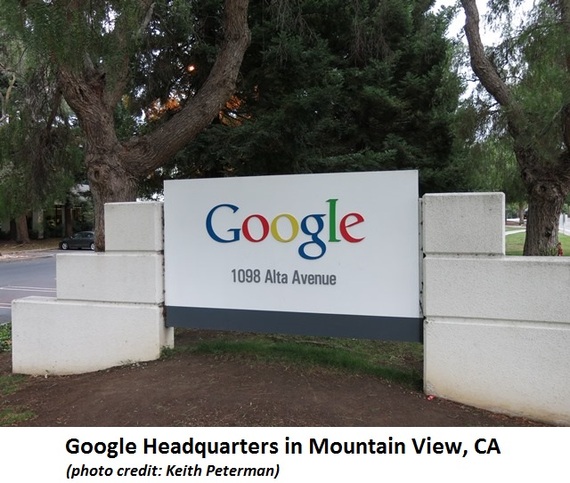More than 15,000 chemists are gathering in San Francisco this weekend for the upcoming August 10-14 National Meeting of the American Chemical Society. The theme for our national meeting is "Chemistry and Global Stewardship."
I spent last evening in Mountain View, a community situated in the heart of Silicon Valley. "Global Stewardship" was on my mind during my morning walk. It was a short stroll from my apartment, up and over a high pedestrian bridge traversing busy Route 101 beneath, en route to the shoreline walking/biking path. While on the pedestrian overpass, I reflected on the bustling dense collection of commuters beneath. Each auto, bus, and truck was spewing roughly three pounds of carbon dioxide into the atmosphere per pound of petroleum-derived fuel consumed -- a number easily calculated by any chemist.
I continued on to the macadam walking/bike path which hugged a stagnant, algae-covered stream to my left. I watched as a duck dunked its head beneath the shallow standing water foraging for plant life beneath. Less than 50 yards further along, I saw a collection of anthropogenic (human) rubbish in the stream -- a bike, soccer ball, paper cup and plastic bottle closely mingled. About 200 yards further up the path, I passed by Google headquarters to my right.
Walking beneath gray overcast skies, my thoughts circled back to an editorial that appeared recently in my hometown newspaper. The author of this article presented his personal views of "Climate Nonsense, from A to Z", ranging from "A fraud, A scam" to "Zip your jacket for a cold spring." I pondered how each of the author's 26 alphabet-derived ideological snippets was much like the duck with its noggin stuck beneath the surface, oblivious to the nearby adverse anthropogenic impacts. If he would pull his ideological head out of the sound-bite muck and "Go" up an information path to "Ogle" a bit -- that is, "Google" climate change articles online -- he would likely increase his climate literacy.
This brings me back to the national ACS meeting in San Francisco. In an unambiguous message for policymakers, ACS states, "climate change is happening [and] it is creating abrupt, radical change."
My colleague Dr. Greg Foy and I have organized a student-focused symposium titled "Global Stewardship by Increasing Climate Science Literacy" for this ACS meeting. Multiple presenters will offer scientific insights aimed at increase climate literacy among students and young adults.
In the interest of "Global Stewardship", I offer a collection of my own 26 "A to Z Climate Literacy" statements. These can be readily verified and expanded upon by Googling the statement + "climate change." Or, better yet, use "Google Scholar" to specifically search scholarly articles.
A. Anthropogenic effects clearly emerge as major cause.
B. Black carbon (soot) from diesel and coal is major contributor.
C. Carbon dioxide (CO2) in our atmosphere increased from 280 ppm to 400 ppm since the onset of the industrial revolution.
D. Desertification affects a third of world's land surface.
E. Extreme weather events occurring as predicted by computer models.
F. Feedback loop accelerates warming trend.
G. Global warming potential (GWP) of methane (CH4, natural gas) is 23 times greater than CO2.
H. Hydrofluorocarbons (HFCs) have GWP hundreds of times greater than CO2.
I. Island nations are disappearing below rising sea levels.
J. Joint implementation provides credits to wealthy donor countries for helping developing host counties.
K. Keeling Curve records high precision, high accuracy instrumental measurements of CO2 in our atmosphere.
L. Land use change in forestry and agriculture impact emissions and removal of CO2.
M. Mitigation efforts are required to limit severity.
N. NASA satellite data continue to document multiple planetary changes.
O. Ocean levels are rising.
P. Polar bears are at risk.
Q. Quantified emissions reductions must be binding.
R. Receding glaciers worldwide are most visible indicator.
S. Species redistribution is occurring on every continent and in most oceans.
T. Two degree rise in average global temperature is predicted by mid-2030s.
U. United Nations Framework Convention on Climate Change seeks to prevent dangerous human interference.
V. Vector-borne diseases are spreading.
W. Women are more adversely impacted than men.
X. Xenon (Xe) is a member of the Nobel Gas family, along with Argon (Ar), the third most abundant gas in our atmosphere.
Y. Yak flatulence, which along with sheep, cow, and other ruminant belching and flatulence, emit methane gas (CH4).
Z. Zero carbon economy needed to avoid climate catastrophe.
